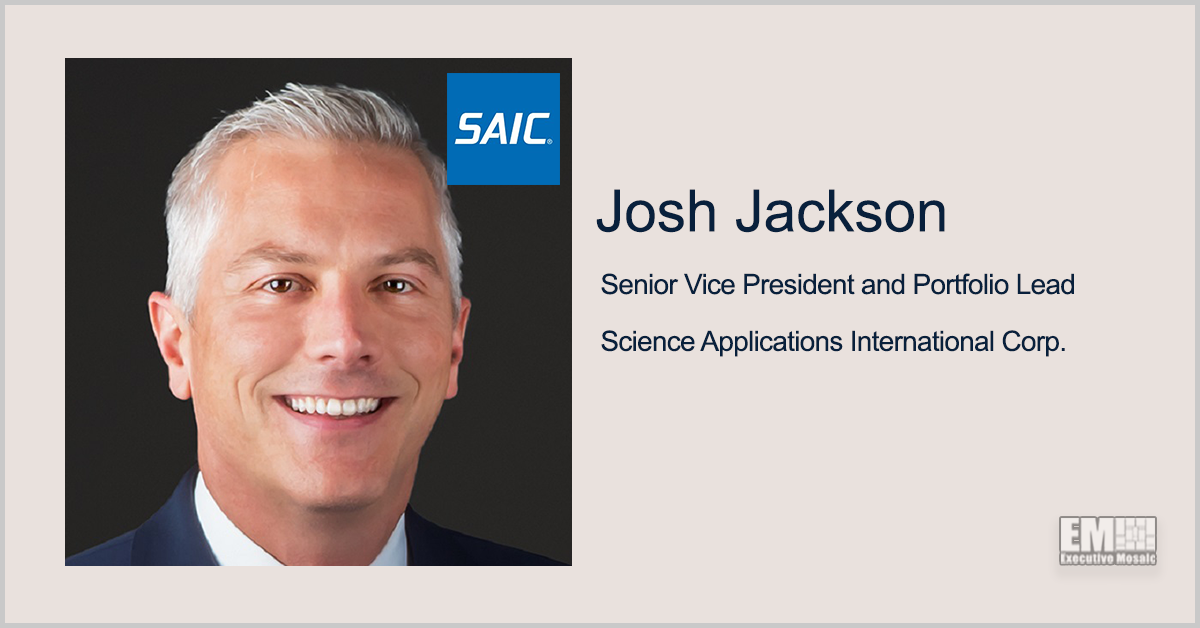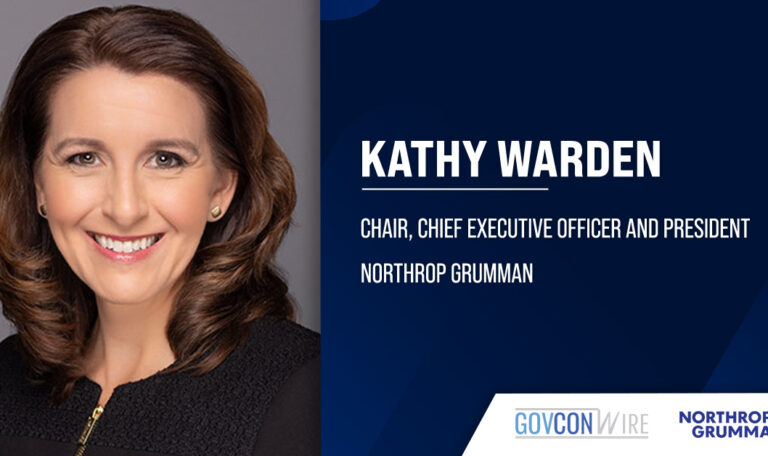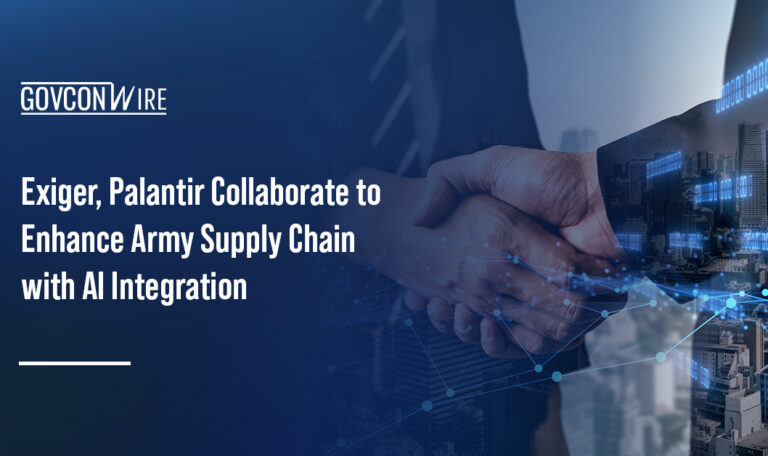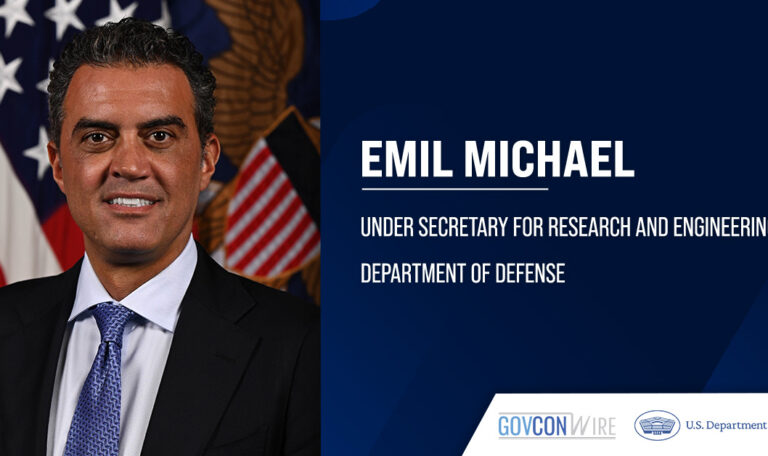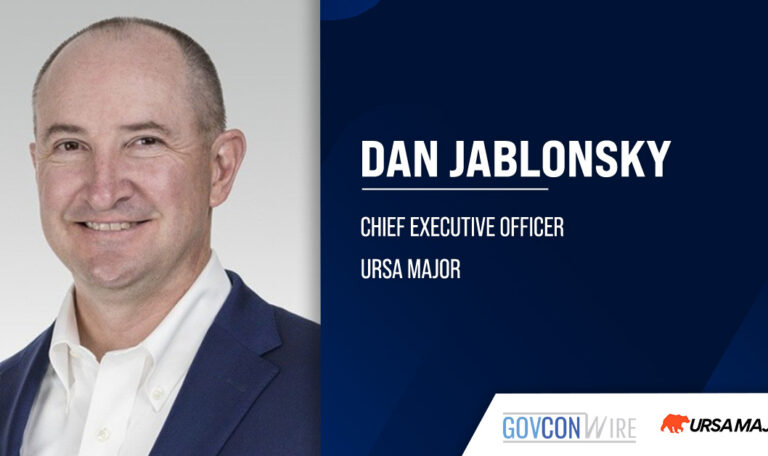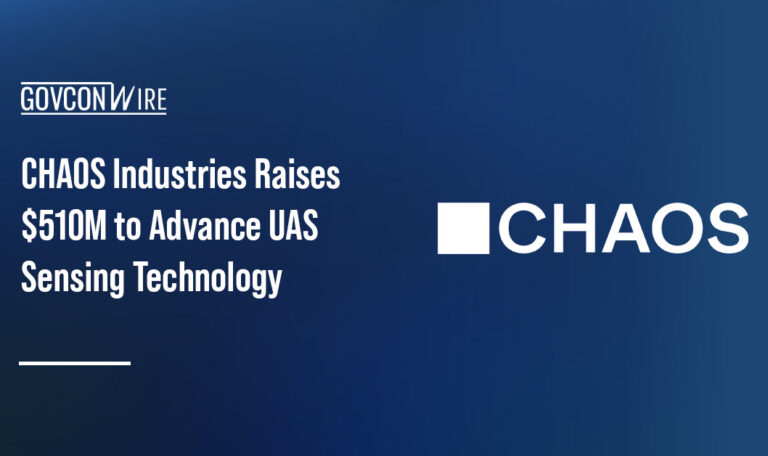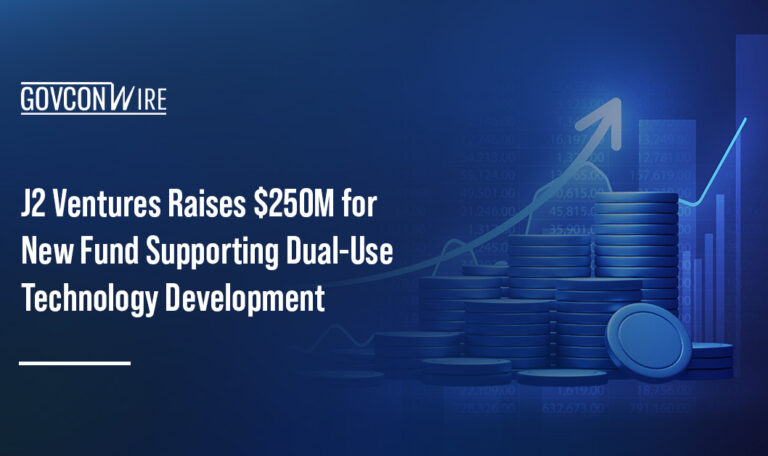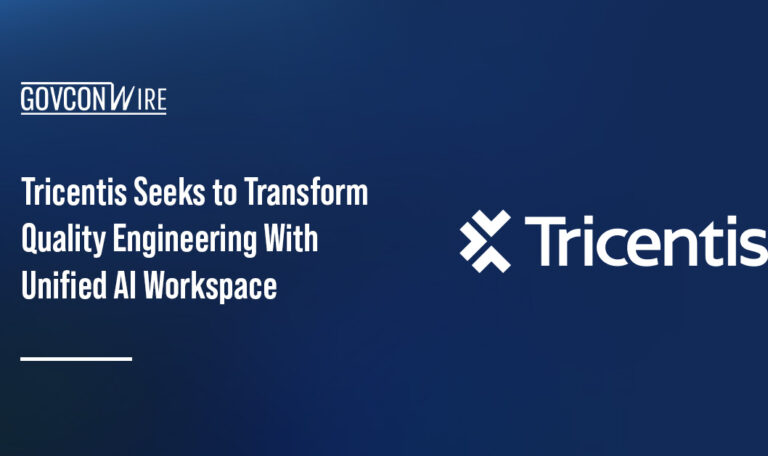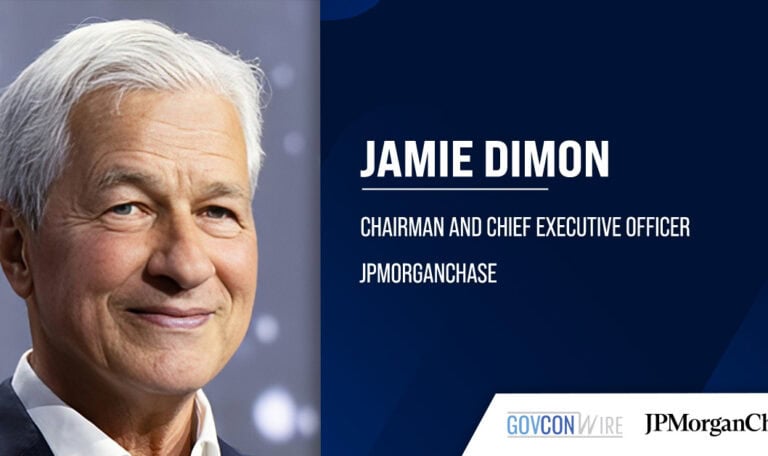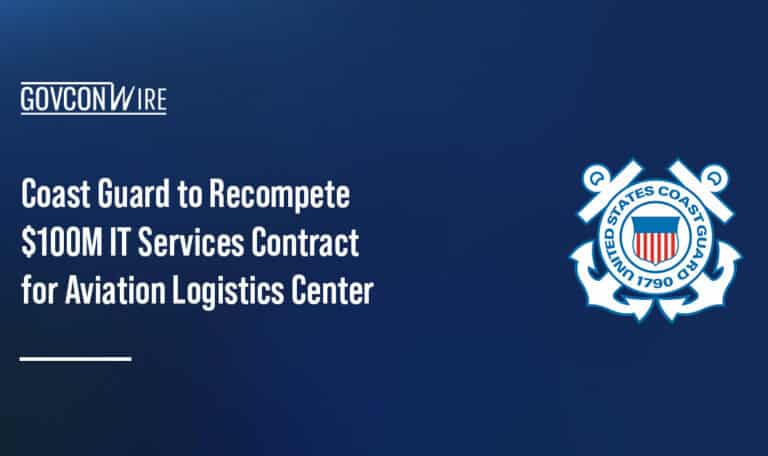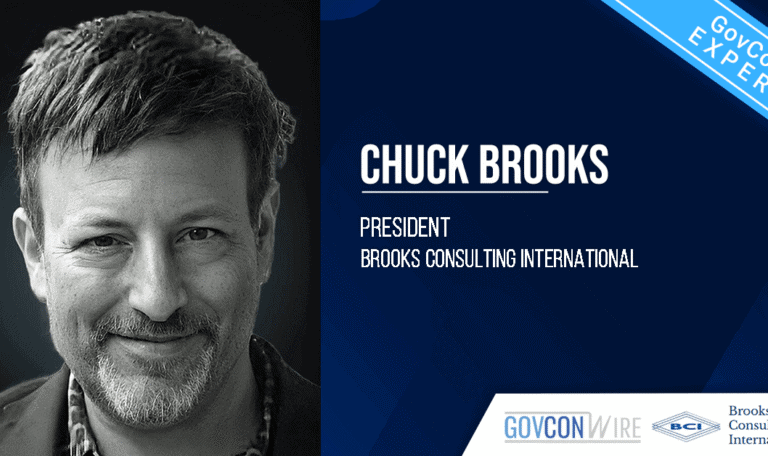Josh Jackson, senior vice president and portfolio lead for Science Applications International Corp.’s U.S. Navy and U.S. Marine Corps business, recently spoke with GovCon Wire to discuss the company culture and values that are essential to the success SAIC has maintained.
In addition, Jackson spoke with the publication about the challenges of ensuring proper training for U.S. warfighters with the latest emerging technologies as well as the unique challenges surrounding the business side of innovation during the latest Executive Spotlight interview.
“We’re in a global competition in terms of applying technology in meaningful ways to support our nation’s defense and advance global stability. I would never bet against the United States in terms of being innovative, especially for software intensive systems, which dominate the landscape. Our ability to create and innovate is unparalleled.”
You can read the full Executive Spotlight with Josh Jackson below:
GovCon Wire: What are the core values that are important to your company’s culture? How has your team developed its workflow to drive success and drive value for your employees as you look to recruit and retain the best talent?
Josh Jackson: “Our foundation, established over five decades ago, is rooted in innovation. It is in our DNA, and our commitment is to help the federal government in their transformation journey no matter where they are and in whatever aspects they are interested in transforming.
Overall, our capabilities as well as our talent fuel us, and we are known for our extraordinarily smart and passionate people. SAIC has been that way for the last five decades and we are not showing any signs of slowing down.
In addition, our customers know SAIC for our commitment to their mission and delivering innovation with advanced technology. People who know SAIC know that we believe that our business thrives when our people thrive.
Our success begins and ends with the ability of our people to contribute their unique perspectives to solve some of the federal government’s most pressing challenges. We care about our people and communities, our environment and our nation. I believe that SAIC is known for our strong ethics and integrity.
I came to SAIC almost 20 years ago not only because of that reputation, but because I also saw an opportunity to do very interesting work that actually mattered to our nation. I have stayed for almost twenty years because every day, I hear and see people within our company still doing very interesting work that matters to our nation.
The pandemic has led people to ask themselves if they are fulfilled by their work on a daily basis. If the last two years have taught us anything, it is a time to reflect, get off the treadmill and think about what is really most important.
At SAIC and our Navy business, which is the area that I lead, we are very thoughtful and intentional about our employee’s experience and it is an absolute priority for us. We do our best throughout the interviewing process, the onboarding and welcoming process, as well as building the team and ensuring everyone feels included and can bring their true selves to work.
SAIC has taken a holistic approach to acquiring new talent. As we continue to grow, ensuring our teammates, new and experienced, feel like they are a part of the SAIC team from their first day is a big part of our process. That just strengthens our values and what we can provide for our customers to find success in their most complex missions.”
GovCon Wire: With the influence of emerging technologies impacting every aspect of business, how has your company been able to drive digital transformation efforts to stay ahead of the global innovation curve in the federal landscape for yourself and your customers as they implement the latest trends in technology such as AI, 5G, cloud and many others?
Josh Jackson: “In our organization that supports the Navy, we look for and drive holistic solutions that account for the mission and the culture, and the technology. Many of those solutions also have to factor in artificial intelligence, 5G, cloud or other key aspects.
We must take a holistic approach to solve these complex challenges. We are willing to work and contribute to a healthy ecosystem. From my perspective, a healthy ecosystem includes government, military, research labs as well as industry and defense-focused companies like SAIC to look for those holistic solutions.
If we want a healthy ecosystem, we also need to be willing to share and collaborate in order to solve the most complicated innovation challenges that our country is facing. I think that users and solution providers also will need to gain an understanding of the existing technologies as well as those in development that enable mission success.
For the Navy and Marine Corps, that means factoring in the austere denied, disrupted, intermittent, and limited bandwidth environments they will surely encounter in any operational theater. Our focus, while compiling a holistic solution, is to serve up consumable, usable data and applications solutions to our warfighters so they can successfully operate at the edge with the information and tools they need to be successful.
Here is an example: the Navy operates in limited environments with a ton of disrupted data and information. We need to shift our mentality and architecture from a net centric mindset to a user and edge-centric approach to design.
Under operational duress, edge users need the capability to process and exchange data locally until they can get that reliable connection, which is a challenge for a number of reasons. I believe that is where artificial intelligence can play a key role in the process to help us with the data.
There are a bunch of other technical dimensions that SAIC and many others in the ecosystem are looking to enable for Navy missions in that environment. At the end of the day, it all boils down to bringing the best that technology has to offer and applying it in a way that’s relevant and supportive of missions that have those unique challenges like the Navy.
It’s obviously very challenging, but it’s also very exciting and motivates me and my team at SAIC to build those solutions for our customers.”
GovCon Wire: As warfare continues to be influenced by IT modernization and other initiatives, what do you believe are the most significant capabilities that are being developed for the Army, Navy, etc. to ensure our warfighters have received proper training with the latest emerging technologies and have the tools they need to protect our nation’s national security interests?
Josh Jackson: “The first of two important aspects to discuss here are leveraging technology to advance training and mission understanding. The second is the operational environment where you have IT systems and the need for them to operate in a cloud environment as well as in a disconnected or intermittent environment.
Even if users have the world’s best cloud solution to meet a mission challenge, we are going to fail to achieve true transformation if we cannot think through how we actually employ solutions that actually will address organizational changes alongside the implementation of technology.
As I mentioned, we need to think holistically and not just about the technology pieces of the puzzle. We need to think about how technology is being used and how we might change from a concept of employment or operations. As a result, that is what drives SAIC in this situation to think about these IT modernization and systems modernization efforts.
From the training perspective, we absolutely have to take advantage of what the commercial industry is bringing and advancing in terms of augmented, virtual reality or extended reality and bring that into a training environment.
For instance, we provide realistic training that is also highly distributed. Another big thing we have learned from the pandemic is that we must get better about bringing everyone together because there will always be a need to bring human beings together to make organizations function well. I think SAIC can and should leverage some of those extended reality technologies to a higher degree in order to actually advance operational readiness even faster.
I am cautiously optimistic because everyone in the defense ecosystem is on the same sheet of music. We do need to embrace more advanced technologies faster and take more risks, but it depends on the application.
We have seen some dramatic increases over the past few years where the rise of virtual reality and augmented reality-based flight training is offering another venue besides burning fuel in an actual aircraft to improve the readiness of our flight crews and pilots even in the early stage.
That is especially true in the early stages of flight training because doing that in a virtual world is challenging, but it is not just virtual reality or augmented reality. As we talked about, technology is also applying artificial intelligence to improve the effectiveness of training across multiple fronts and leveraging that machine learning to look at almost all aspects of the data.
SAIC is making some solid investments in that area and seeing some payoff through moving individuals faster through a training pipeline. That way they can be ready on a much-accelerated period, or that groups of individuals can accelerate their collective readiness through the use of AR and virtual reality. I think artificial intelligence will drive some of those learnings faster.”
GovCon Wire: We often discuss innovation from the technical or capability side. What are some of the unique challenges that you’ve seen on the business side of innovation that haven’t been addressed or discussed enough?
Josh Jackson: “This question also goes back to the holistic view of innovation, which is about not looking at it only through just a technology lens. The holistic approach looks at the issue through the lens of the organization and culture. Those aspects are equally, if not more important than the lens of technology.
I think part of what SAIC needs is to create tighter partnerships between government, industry, academia and drive more transparency in all phases of building capabilities. There is no question about the federal government, industry and our military wanting speed of solutions for our warfighters. The entire process is about discovering the most effective ways to do that.
In order to be successful and drive rapid capabilities to solve some of these complex challenges across the United State, we need a healthy ecosystem with everyone contributing and everyone benefiting. We also need that healthy ecosystem around collective risk tolerance and risk taking. We need to take more collective risks if we want to move faster. Industry should be taking risks to deliver things faster to our warfighters that need capabilities to serve and protect our Nation.
I ask our team at SAIC to think courageously and act quickly, which has been a great driver for our innovative culture that has led to our success for more than five decades. I think that bravery in innovation is the hallmark of SAIC’s corporate identity and we’re all about trying to contribute as much as we can to drive the health of our greater ecosystem.”


